Eco: mode or gimmick?
I know what you're thinking -- "A Mahindra TUV300, a Tata Zest, a Mercedes-Benz A-Class and a Honda City? That's a rather odd bunch of vehicles to be in the same story, considering they have nothing in common!" That would be true except, there is one feature they all have a small button that activates a driving mode called, Eco mode! There are nearly 40 cars sold in the Indian market that offer this feature, and that got us curious. Does this actually make a difference to the efficiency, or is it just another one of those overused automotive jargons like "cockpit inspired interior".
So we took four cars, representative of a particular segment and body style, and put them to the test. The Tata Zest Revotron represents the entry hatchback / sedan segment. The Honda City CVT stands up for the premium entry sedan, the TUV300 for the compact SUV and lastly the Mercedes A-Class brings up the premium segment.
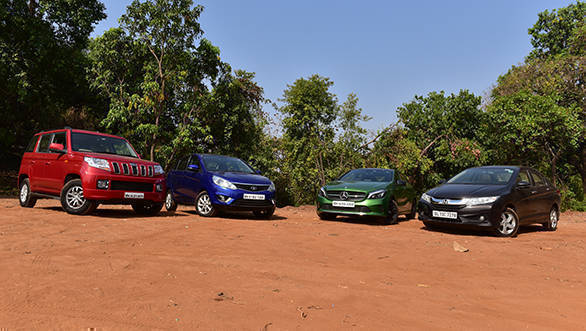
The Parameters
The parameters for testing the vehicles had to be very specific. We had to ensure that the testing conditions were identical to get the best possible results. The distance covered in a single run was 75km, since that is where we got a turn around point. As always, we use the full tank to full tank method to test the efficiency, which we have found to be the most accurate. So, I tanked up the car to the brim at a fuel station, drove the 75km and headed back to the same fuel station before filling fuel up to exactly the same level.
The reason we chose this route was because it is our usual testing course and we knew that the traffic conditions remain very similar throughout the day. The route has an even mix of urban traffic speeds and highway speeds. This would keep variations in driving conditions at a minimum. I myself drove each vehicle twice at an average speed of around 70kmph (tacho showing under 2,000rpm) - once with the Eco mode on and once with it turned off. With all this sorted, it was time to hit the road. The results were astonishing, to say the least! Read on.
Mahindra TUV300
The Eco mode on the Mahindra TUV300 certainly seemed to work and managed to increase efficiency by around 24 per cent. However, the catch is that the car feels almost lifeless with the Eco mode engaged. With the Eco mode turned on, the throttle sensitivity is reduced by quite a bit and the electronics also cut the power down by around 12 per cent, according to Mahindra. This means that with the mode engaged, the TUV300 makes around 73PS instead of the 83.6PS it produces in standard mode. The engine speed is also curtailed, so you hit the red line a bit earlier. The Eco mode drops top speed to 115kmph from 143kmph.
According to the company, the Eco mode has been especially developed for city conditions. It however can get pretty annoying when the traffic is thick and crawling along, since the engine has much slower responses and this does not let you keep pace with the flow. The Eco mode takes away all the heft from the glorious sweep of torque that makes the TUV endearing. This means you'll usually end up prodding the accelerator harder than you normally would. Avoid that and you get the desired fuel efficiency.
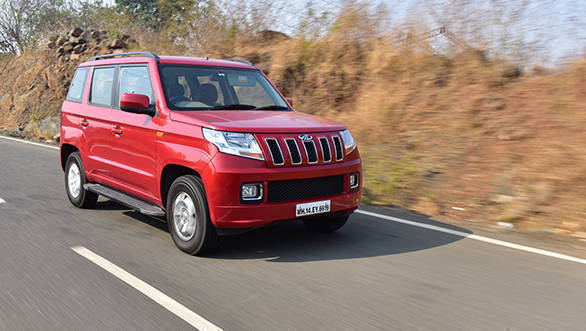
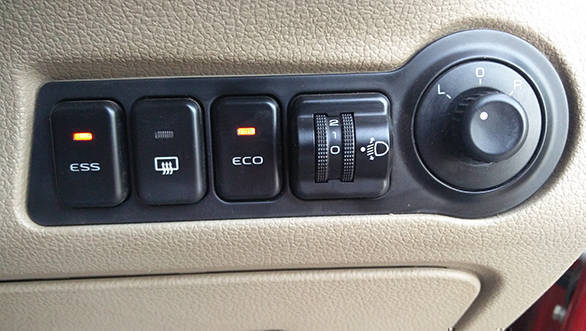 With the Eco mode engaged, the TUV300 feels very bogged , and this can make driving around quite vexing
With the Eco mode engaged, the TUV300 feels very bogged , and this can make driving around quite vexing
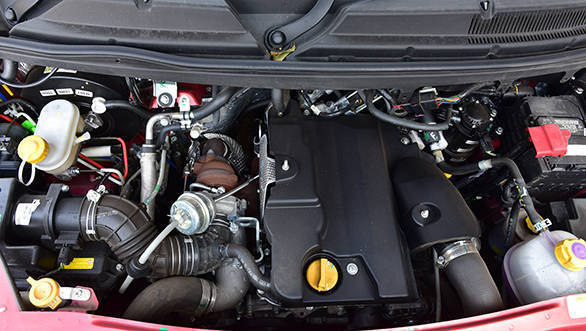
A limiting factor for the Eco mode in the TUV could have been its kerb weight. With the peak power trimmed in Eco mode weakening the power to weight ratio, engine loads would increase, resulting in lesser efficiencies. Nonetheless the engine map balances this out superbly, still giving the 24 percent boost to fuel efficiency!
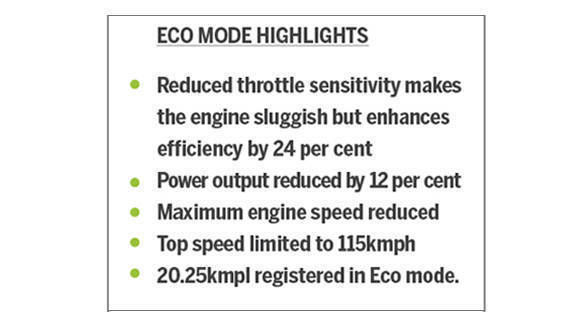
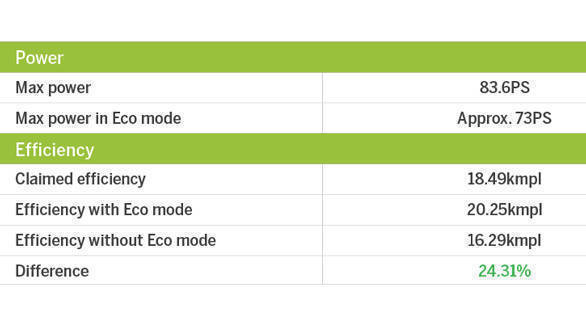
Tata Zest Revotron
The Tata Zest's Eco mode works quite similarly to the one in the Mahindra TUV300. According to Tata, the system narrows the engine's power and torque bands, reduces throttle sensitivity, and also reduces the power and torque output by around 15 per cent as against the TUVs 12 percent. According to Tata's technical team, this is the minimum amount of restriction necessary to achieve a substantial difference in efficiency between the two driving modes. Its also quite possible that beyond this point, any restriction could behave adversely on the fuel economy as well as the overall engine health.
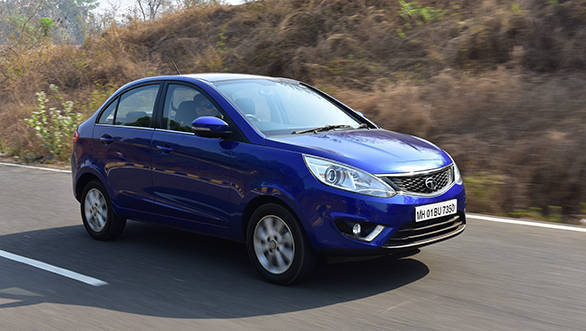
The Eco mode's programming also optimises any auxiliary loads on the engine like the air-conditioning unit and the electricals. This means, cooling efficiency is reduced. So a word of caution, in summer you'd best avoid trying to use the Eco mode too often. If you find your air-con system not cooling adequately, check if you're driving in Eco mode!
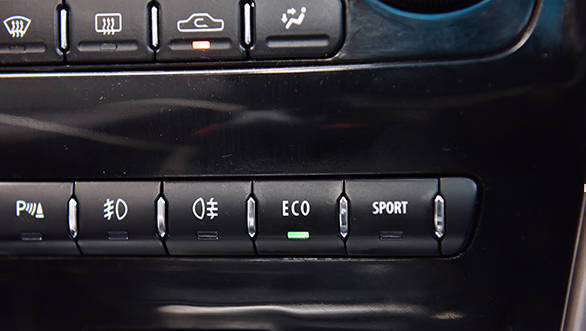 Although there is a noticeable difference in performance while driving the Zest in Eco mode, it doesn't feel too intrusive
Although there is a noticeable difference in performance while driving the Zest in Eco mode, it doesn't feel too intrusive
Either way, all of these changes result in a 14.4 per cent improvement in efficiency, which is quite good. Although there is a noticeable difference while driving the car in Eco mode, the system isn't as intrusive as the one on the Mahindra TUV300. The reduced throttle input is actually quite welcome in slow-moving traffic, as opposed to the rather sharp throttle response in the other two modes. Meanwhile, the drop in power when the Eco mode is engaged doesn't feel drastic enough to get on your nerves.
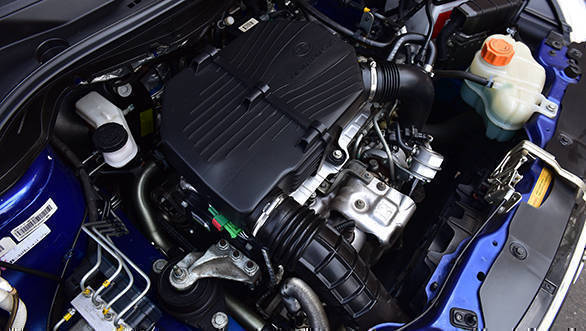
On our test runs, we achieved around 26kmpl with the Eco mode switched on at an average speed of around 70kmph. Switch the mode off and that figure dips down to 23.24kmpl. The difference isnt impressive but for someone on a budget, that 14 percent could mean a lot.
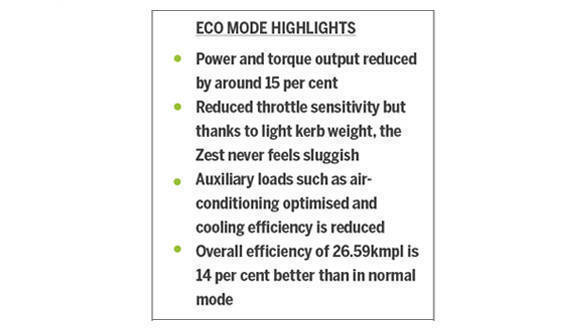
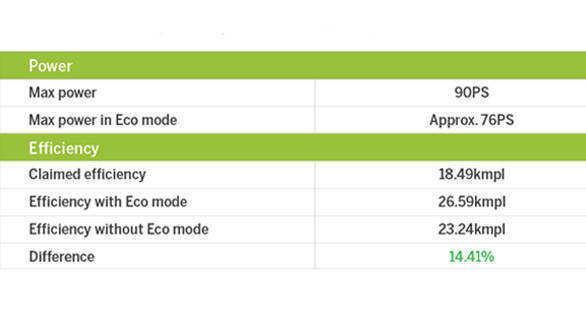
Mercedes-Benz A200d
The Economy mode in the A-Class isn't a complicated system to understand. Since this is an automatic, a torque convertor type, the Eco mode optimises the transmission's shift points for better efficiency. It also adjusts the throttle map to reduce throttle sensitivity. However, unlike the TUV300 and the Zest, the amount of power isn't reduced. Instead, with the gearbox shifting earlier, the car doesn't utilize all of its power for motion. Does that make it sluggish? Not really, but top speed and acceleration is slower than in normal mode.
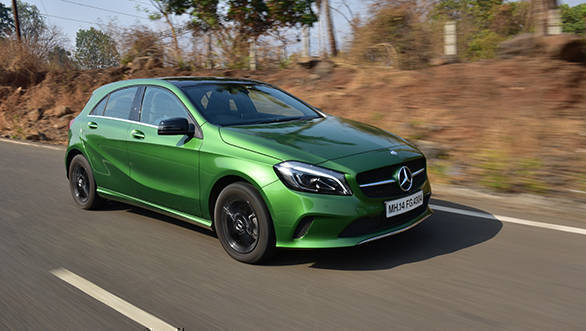
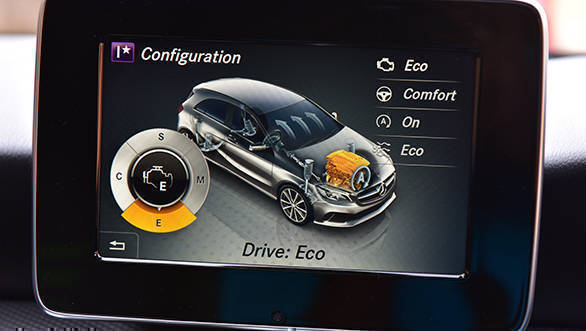 While the A-Class's Eco mode didn't return the most impressive results, it certainly was the least intrusive of the lot
While the A-Class's Eco mode didn't return the most impressive results, it certainly was the least intrusive of the lot
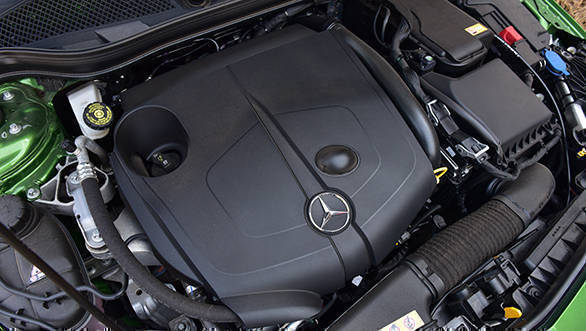
The A-Class also utilises a coasting function which uses kinetic energy to drive the car when the driver backs off the accelerator. Despite all of this though, it returned just 2kmpl extra in Eco mode, since the A-Class weighs around 1,400kilos and the tyres it uses are a sticky 205/55 section. So, although that's not a remarkable increase in efficiency, the more positive takeaway is that the A-Class isn't annoying to drive in Eco mode.
The change in throttle response isn't that drastic, and when necessary, the transmission does shift later in the rev range, all you have to do is push the pedal to the floor. With the Eco mode on, the it can be driven comfortably irrespective of traffic conditions. So unlike in the TUV300, you won't find yourself hitting the accelerator too aggressively to make up for the lack of power. So by the end of it, you might actually end up saving fuel, albeit it will be a little at a time.
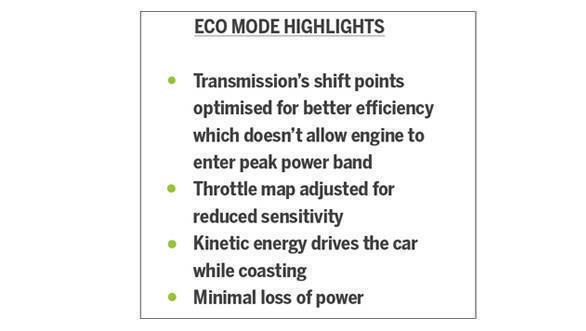
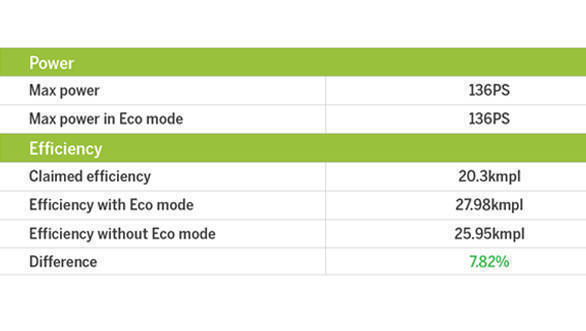
Honda City CVT
I've saved the Honda City for last because it returned the most controversial results in this test. The Econ mode from Honda is available only on the CVT variant of the car. While Honda hasn't told us how this system works, we assume that it is based on the same principles used in the other cars. This means that the throttle sensitivity is reduced, power delivery is optimised, auxiliary loads on the engine are reduced and the transmission shifts earlier in the rev range.
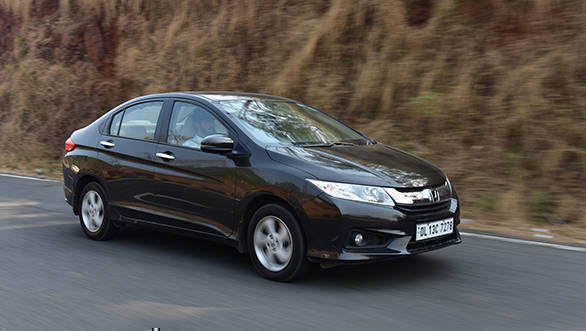
When we tested the City, it was less efficient with its Econ mode switched on. With the standard mode engaged, it returned 21.15kmpl. While in Econ mode, it returned 16.59kmpl. Perplexed by this result, we set out to run the test again over the same distance some time later. However, the outcome was roughly the same. The City returned 17.9kmpl this time with the Econ mode engaged and 22.43kmpl in the standard mode.
When informed, Honda officials conducted their own tests. The technical team tested the car for an overall 10.4km maintaining an average speed of 60kmph on a flat road. As indicated by the real-time mileage indicator on the MID display unit, which Honda claims is an accurate measure, the City returned an average of 15.8kmpl with the Econ mode engaged and 14.8kmpl with it switched off.
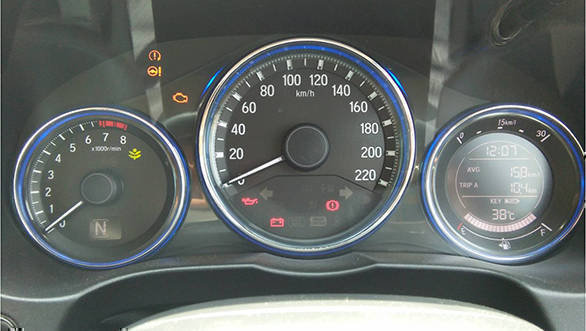
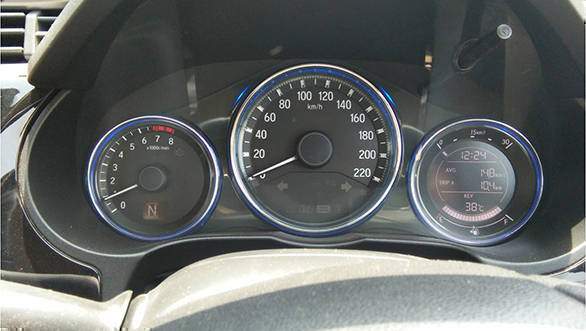 Honda conducted its own tests under slightly different conditions. According to the real-time mileage indicator, which Honda claims is accurate, the City returned a higher efficiency figure in Econ mode
Honda conducted its own tests under slightly different conditions. According to the real-time mileage indicator, which Honda claims is accurate, the City returned a higher efficiency figure in Econ mode
Honda has yet to respond to us on what changes are affected by the Econ mode. The only thing we suspect that could have gotten us a dismal result is if the Econ mode in the City cuts peak power and if our driving conditions a mix of urban and highway with some inclines thrown in strain the engine more than in standard mode. This could lead to the drop in efficiency. Honda tested the car on a straight stretch and that could have gotten the more desired results, but real world driving conditions are seldom like that. We will have more answers for you on the subject.
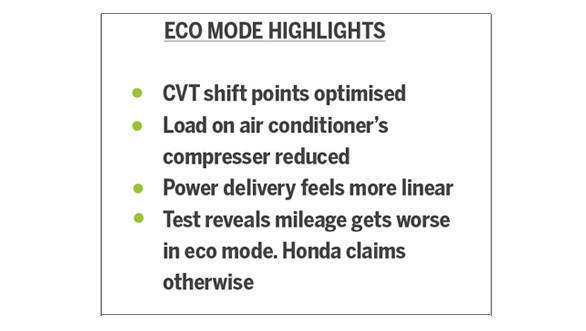
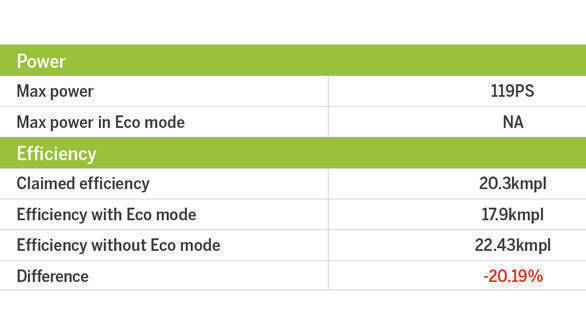
Conclusion
The Eco mode has come a long way in terms of technology, and as we found out, it certainly isn't a gimmick. The savings are real, but they do come at a slight loss of power and reduced throttle responses some systems more so than others.
On an average, the increase in efficiency in the cars we tested is about 15 per cent, which is a fairly significant amount, especially considering no additional components like a hybrid system are used. However, getting better efficiency is also a derivative of a person's driving style and traffic conditions. Do bear in mind that the entire exercise is defeated if you have a heavy right foot and exercise it often and hard on the accelerator pedal. And sometimes, heavy traffic conditions could have an adverse result, especially if you have a heavy vehicle that needs a substantial amount of power and torque to generate momentum. Getting the most mileage is a factor of how progressively power is demanded and derived from the engine!
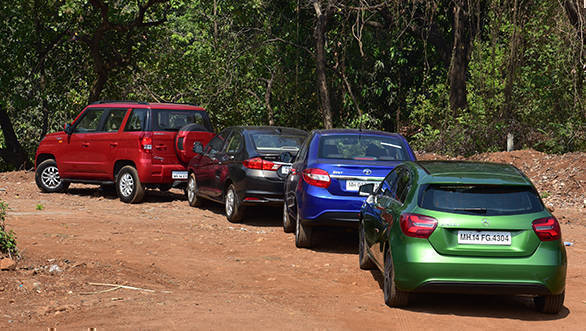
This 15 per cent increase we achieved was in the most ideal conditions we could find in the real world, which is certainly not the same chaos we all deal with every day. That being said, you can be assured that the Eco mode will save you a decent amount of cash at the end of the month and will also make you feel a little less guilty about burning fuel.
Is the Eco mode a miracle worker? Not really, but the fact is that this technology has trickled down from more premium cars to the affordable segment over the years, and can only be expected to get better and better. Contemporary Eco mode systems carry out various functions to save fuel, and these systems are getting more complex, demanding more powerful computation. Yet, an Eco mode function is more affordable than the slightly more expensive switch to a hybrid system.
Now, the only thing left is to actually get people to use it!
Starts Rs 10.9 Lakhs
1497cc
Manual
100
145
17.8 Kmpl
Starts Rs 8.4 Lakhs
1493cc
Manual
-NA-
240
-NA-
Starts Rs 41.55 Lakhs
1950cc
Automatic
150
320
21.35 Kmpl
Related Stories
Top Stories
Latest Videos
Most Popular
- Budget Sportbike Showdown: Kawasaki Ninja 500 vs Aprilia RS 457 vs Yamaha YZF-R3
- 2014 Triumph Daytona 675 vs 2024 Kawasaki ZX6R - A Decade of Evolution in Supersport Motorcycles
- Mumbai-Pune Expressway speed restrictions updated
- Nissan Magnite EZ-Shift review - is the AMT any good?
- Nitin Gadkari states that tax on Hybrids should be reduced to 12 percent in the coming future












